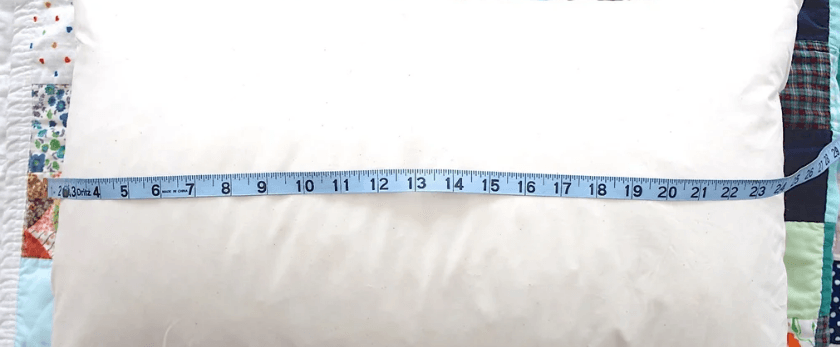In today's world, where environmental concerns are at the forefront of our minds, it's important to consider the impact of our daily choices on the planet. From the food we eat to the products we use, every decision we make can have a significant effect on the environment. One area where we can make a positive change is in our home decor, specifically with cushion covers.
Cushion covers are a common household item that often goes unnoticed when it comes to their impact on the environment. However, the truth is that most cushion covers are made from synthetic materials, such as polyester or nylon, which are harmful to the environment. These materials are not biodegradable and can take hundreds of years to decompose, contributing to the growing problem of plastic pollution.
But fear not, there is a simple and sustainable solution – making your own cushion covers at home. Not only is it better for the environment, but it also allows you to get creative and add a personal touch to your home decor. In this article, we'll discuss why homemade cushion covers are a better choice for the environment, what you'll need to make them, and provide step-by-step instructions to help you get started.
Why Traditional Cushion Covers are Bad for the Environment
As mentioned earlier, most cushion covers are made from synthetic materials, which are derived from non-renewable resources and have a significant impact on the environment. The production of these materials involves the use of harmful chemicals and consumes a large amount of energy, contributing to air and water pollution. Additionally, the process of dyeing and printing these materials also releases toxic chemicals into the environment.
Moreover, once these cushion covers are discarded, they end up in landfills, where they take hundreds of years to decompose. As they break down, they release microplastics into the soil and water, which can harm wildlife and enter our food chain. This cycle of production, consumption, and disposal is not sustainable and has a detrimental effect on our planet.
Why Making Your Own Cushion Covers is Better for the Environment
Making your own cushion covers is a simple and effective way to reduce your environmental impact. By using sustainable materials and following responsible disposal methods, you can significantly reduce your carbon footprint and contribute to a greener planet.
One of the main benefits of making your own cushion covers is that you have control over the materials used. Instead of using synthetic materials, you can opt for natural and sustainable alternatives, such as organic cotton, linen, or hemp. These materials are biodegradable, meaning they can decompose naturally without releasing harmful chemicals into the environment.
Furthermore, making your own cushion covers also reduces the need for transportation and packaging, which are major contributors to carbon emissions. By sourcing materials locally and reusing old fabrics, you can minimize your carbon footprint and support local businesses.

What You'll Need to Make Homemade Cushion Covers
Making your own cushion covers is a simple and affordable process. Here's a list of materials and tools you'll need to get started:
- Fabric of your choice (organic cotton, linen, or hemp are recommended)
- Sewing machine or needle and thread
- Scissors
- Measuring tape
- Pins
- Iron
- Buttons, zippers, or other closures (optional)
Step-by-Step Instructions for Making Homemade Cushion Covers
Now that you have all the necessary materials, let's dive into the step-by-step process of making your own cushion covers.
Step 1: Measure and Cut the Fabric
Start by measuring your cushion insert to determine the size of your cushion cover. Add an extra inch to each side for seam allowance. For example, if your cushion insert is 18x18 inches, your fabric should be 20x20 inches.
Next, lay your fabric on a flat surface and use a measuring tape and scissors to cut it to the desired size. Make sure to cut two identical pieces for the front and back of the cushion cover.
Step 2: Hem the Edges
To prevent fraying, hem the edges of your fabric by folding them over twice and sewing them in place. You can use a sewing machine or hand-stitch the hems.
Step 3: Sew the Front and Back Pieces Together
Place the two fabric pieces with the right sides facing each other and pin them together. Sew along three sides, leaving one side open for inserting the cushion.
Step 4: Add Closure (Optional)
If you want to add a closure to your cushion cover, now is the time to do so. You can use buttons, zippers, or any other closure of your choice. Simply sew them onto the open side of the cushion cover.
Step 5: Turn the Cover Inside Out and Insert the Cushion
Once you've added the closure, turn the cushion cover inside out, so the right sides are facing out. Insert your cushion into the cover through the open side.
Step 6: Sew the Final Side
Finally, sew the open side of the cushion cover closed, and your homemade cushion cover is ready to use!
Responsible Disposal of Old Cushion Covers
Now that you have your new homemade cushion covers, it's important to dispose of your old ones responsibly. Instead of throwing them away, consider repurposing them for other household items, such as cleaning rags or pet bedding. If they are still in good condition, you can donate them to a local charity or thrift store. By giving your old cushion covers a new life, you're reducing waste and contributing to a circular economy.
Conclusion
In conclusion, making your own cushion covers is a simple and sustainable solution for a greener home. By using natural and biodegradable materials, reducing waste, and supporting local businesses, you can make a positive impact on the environment. So why not give it a try and add a personal touch to your home decor while also helping the planet? Let's work together towards a more sustainable future.










